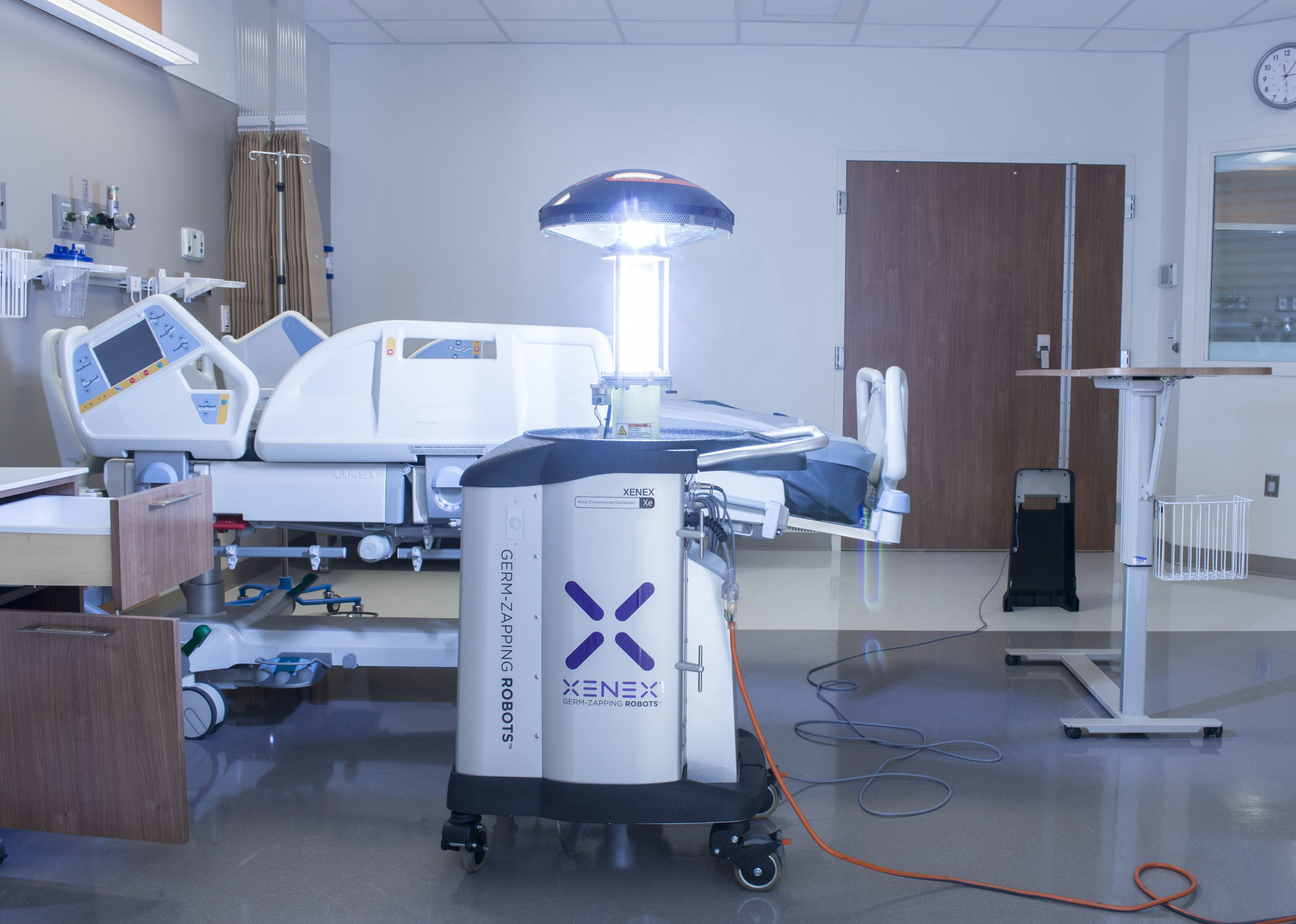Surfaces contaminated with SARS-CoV-2, the virus that causes COVID-19, pose a grave threat to the safety of healthcare workers, patients, frontline responders, military service members, cruise line passengers, hotel guests and people everywhere. A new study published on medRxiv reports the effectiveness of a broad spectrum, pulsed xenon ultraviolet (PX-UV) disinfection system in quickly deactivating SARS-CoV-2 on surfaces, and the implications for reducing the risk of COVID-19 transmission everywhere that people work, travel, play and live.
The study authors include renowned infectious disease physicians, infection prevention experts, and representatives from the Central Texas Veterans Healthcare System, HonorHealth, Mayo Clinic, Texas Biomedical Research Institute, The University of Texas MD Anderson Cancer Center, University of Michigan, University of California-San Francisco, WVU Medicine, and Xenex.
“Deactivating SARS-CoV-2 on surfaces is a critical and necessary step to protect people now and in the future as businesses reopen and people get back to work. We convened an informal panel of some of the world’s leading experts on infectious disease to help us put the recent Texas Biomed study in context,” said Dr. Mark Stibich, Chief Scientific Officer of Xenex. “We studied the role of the environment in the transmission of COVID-19 and evaluated the efficacy of pulsed xenon UV in reducing the risk of transmission. There is so much misinformation about how to adequately decontaminate rooms and spaces so people can feel safe in hospitals and nursing homes, when they travel and to get back to work safely, so our goal with this study was to educate people about the importance of disinfection to avoid the spread of COVID-19.”
After studying results from Texas Biomedical Research Institute that showed pulsed xenon UV light can deactivate SARS-CoV-2 from surfaces in two minutes, the team of researchers evaluated the potential for reducing environmental risk of COVID-19 transmission. “Disinfection effect of pulsed xenon ultraviolet irradiation on SARS-CoV-2 and implications for environmental risk of COVID-19 transmission” is now available online at medRxiv.
The LightStrike™ pulsed xenon disinfection robot is the first ultraviolet (UV) disinfection technology proven to deactivate the actual SARS-CoV-2 (Severe Acute Respiratory Syndrome coronavirus 2). The LightStrike disinfection robot destroyed SARS-CoV-2, which is the virus that causes COVID-19, in two minutes achieving a four-log (99.99%) reduction in that time. Testing was performed at the Texas Biomedical Research Institute, one of the world’s leading independent research institutes working exclusively on infectious diseases.
Unlike most single spectrum low-intensity UV (UVGI) devices, Xenex Germ-Zapping Robots™ use a xenon lamp to generate bursts of high intensity, full germicidal spectrum (200-315nm) UVC light that is more intense than sunlight. Different pathogens are susceptible to UVC light at different wavelengths. With full germicidal spectrum light, Xenex LightStrike robots quickly deactivate viruses, bacteria and spores where they are most vulnerable without damaging hospital materials or equipment.
About Xenex
Xenex is a world leader in UV technology-based infection prevention strategies and solutions. Xenex’s mission is to save lives and reduce suffering by destroying the deadly microorganisms that cause hospital acquired infections. Xenex is backed by well-known investors that include EW Healthcare Partners, Piper Jaffray, Malin Corporation, Battery Ventures, Targeted Technology Fund II, Tectonic Ventures and RK Ventures. For more information, visit xenex.com.
###
Original post https://alertarticles.info
